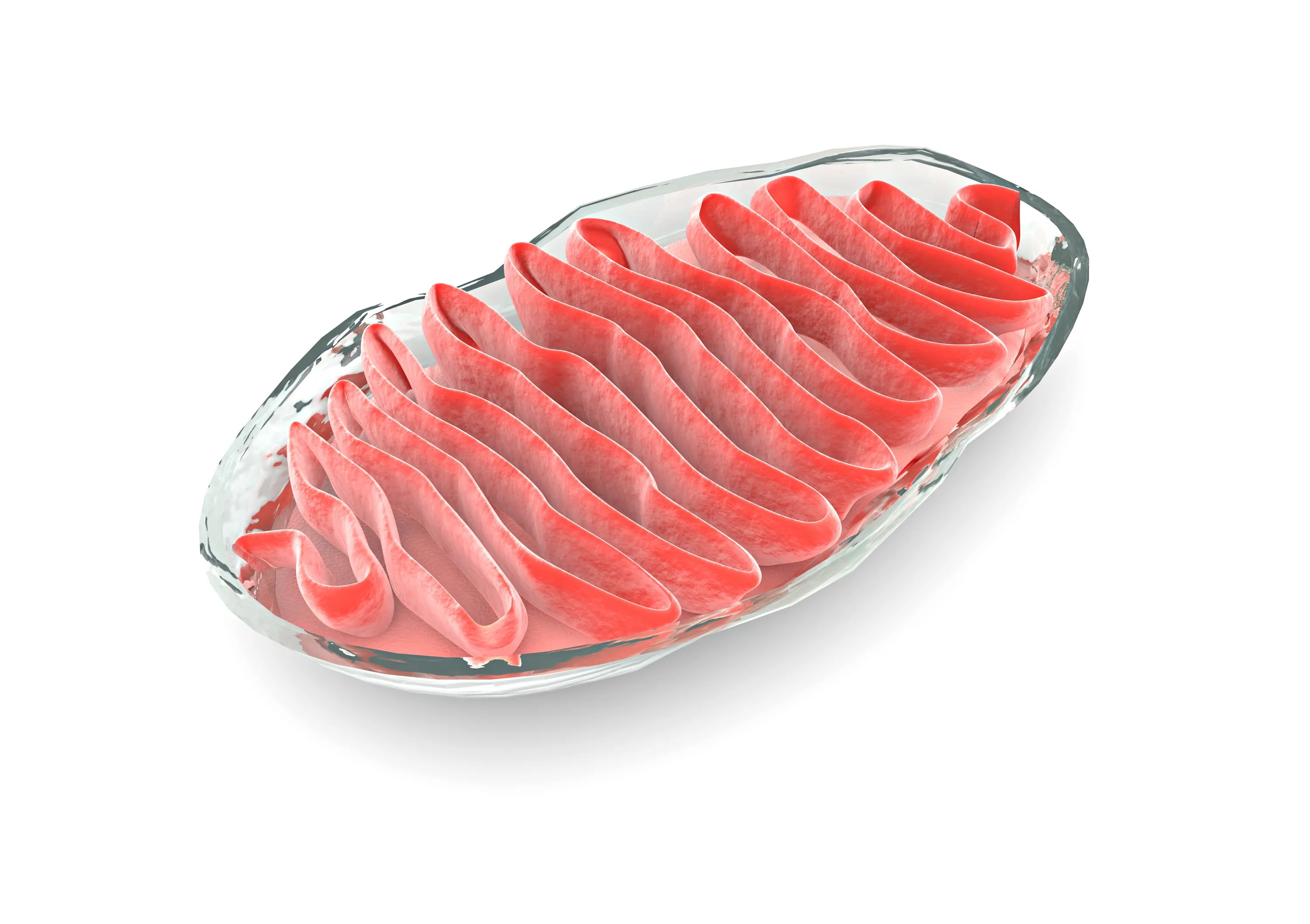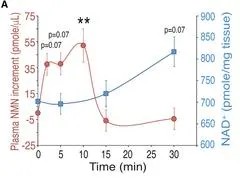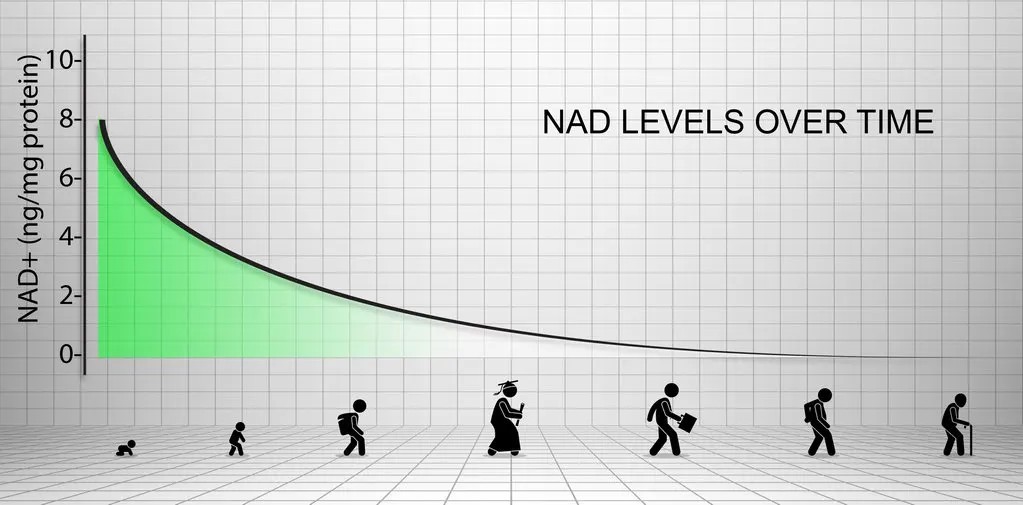-
WHAT IS THE MITOCHONDRIA?
 The Mitochondrion (plural mitochondria) is regularly called the powerhouse of the cell. This is because most of the chemical energy needed to sustain life is produced inside the mitochondria by a process called oxidative phosphorylation that produces ATP. The mitochondria are NAD-dependent for functional mechanics and coordination with the cell Nucleus. To help understand how the mitochondria help in energy production, watch the video below.
The Mitochondrion (plural mitochondria) is regularly called the powerhouse of the cell. This is because most of the chemical energy needed to sustain life is produced inside the mitochondria by a process called oxidative phosphorylation that produces ATP. The mitochondria are NAD-dependent for functional mechanics and coordination with the cell Nucleus. To help understand how the mitochondria help in energy production, watch the video below. -
SO WHAT DOES THIS ALL MEAN? iS THERE A LINK?
Well, the science is starting to clearly show a definite correlation between falling NAD levels and an age-related decline in health & wellness. In 2013 Harvard researchers published a study, where they were able to reverse some parts of aging by treating old mice with an NAD+ precursor. After treating the mice for ten days, key biometrics markers that were measured resembled those of much younger mice. For the first time, we have real evidence that some aspects of aging may be reversible. In 2017 the same research team published a follow-up article. It demonstrated a new understanding of how NAD+ is not only used to repair damaged DNA but how it also stimulates the repair process. It does this by blocking another protein called DBC1 that interferes with the PARP-1 DNA Repair enzyme. This is a crucial finding because an accumulation of DNA damage has long been understood as a part of the aging process.
NAD (Nicotinamide Adenine Dinucleotide) is a molecule found in all living cells and is essential for life. It exists in two forms, NAD+ the oxidized form and NADH the reduced form. NAD is responsible for many critical cell functions, such as energy metabolism, mitochondrial function, calcium hemostasis and gene expression. -
12 Month long Evaluation of NMN Supplementation in Mice
 A 12-month long study carried out by the University of Washington St Louis (as published in Cell Metabolism), found that oral supplementation of NMN in mice was safe and effective at improving NAD+ levels. Mice, supplemented with NMN vs. a control group, showed remarkable age-associated differences in body weight gain, energy metabolism, blood sugar, lipid metabolism, gene expression changes, mitochondrial oxygen use, eye function, bone density and immune function with no apparent toxic effects.
A 12-month long study carried out by the University of Washington St Louis (as published in Cell Metabolism), found that oral supplementation of NMN in mice was safe and effective at improving NAD+ levels. Mice, supplemented with NMN vs. a control group, showed remarkable age-associated differences in body weight gain, energy metabolism, blood sugar, lipid metabolism, gene expression changes, mitochondrial oxygen use, eye function, bone density and immune function with no apparent toxic effects.
-
WHAT IS NAD+?
 Before we answer the question of what NAD+ is, perhaps we should start by exploring what this whole NAD fuss is all about. Scientists have discovered that as we get older, our NAD+ levels steadily decrease. By the time we get to our late 70s and 80s, our NAD+ levels appear to be very much lower, than those of younger people.
Before we answer the question of what NAD+ is, perhaps we should start by exploring what this whole NAD fuss is all about. Scientists have discovered that as we get older, our NAD+ levels steadily decrease. By the time we get to our late 70s and 80s, our NAD+ levels appear to be very much lower, than those of younger people.
NAD is a coenzyme found in all living cells. The compound is a dinucleotide because it consists of two nucleotides joined through their phosphate groups. One nucleotide contains an adenine base and the other nicotinamide. Nicotinamide adenine dinucleotide exists in two forms: an oxidized and reduced form abbreviated as NAD+ and NADH respectively.
In metabolism, nicotinamide adenine dinucleotide is involved in redox reactions, carrying electrons from one reaction to another. The coenzyme is, therefore, found in two forms in cells: NAD+ is an oxidizing agent – it accepts electrons from other molecules and becomes reduced. This reaction forms NADH, which can then be used as a reducing agent to donate electrons. These electron transfer reactions are the primary function of NAD. However, it is also used in other cellular processes, most notably a substrate of enzymes that add or remove chemical groups from proteins, in posttranslational modifications. Because of the importance of these functions, the enzymes involved in NAD metabolism are targets for drug discovery.
In organisms, NAD can be synthesized from simple building-blocks (de novo) from the amino acids tryptophan or aspartic acid. In an alternative fashion, more complex components of the coenzymes are taken up from food as niacin. Similar compounds are released by reactions that break down the structure of NAD. These preformed components then pass through a salvage pathway that recycles them back into the active form. Some NAD is converted into nicotinamide adenine dinucleotide phosphate (NADP); the chemistry of this related coenzyme is similar to that of NAD, but it has different roles in metabolism.
Although NAD+ is written with a superscript plus sign because of the formal charge on a particular nitrogen atom, at physiological pH, for the most part, it is a singly charged anion (charge of minus 1), while NADH is a doubly charged anion.
-
WHAT IS NICOTINAMIDE MONONUCLEOTIDE?
NMN is an entirely natural compound found in our bodies. It is also present in various food sources such as edamame, broccoli, cabbage, cucumber, avocados, and tomatoes. NMN is a direct and potent NAD+ precursor supplement. -
Can NMN rewind the clock on aging?
There are currently several human clinical trials underway that are going to help answer this very question. Dr. Sinclair has been leading the charge in this field for years. Recent NMN trials in mice are very promising and show that more study is warranted. Watch the video below to hear what Dr. Sinclair has to say about where we are today.